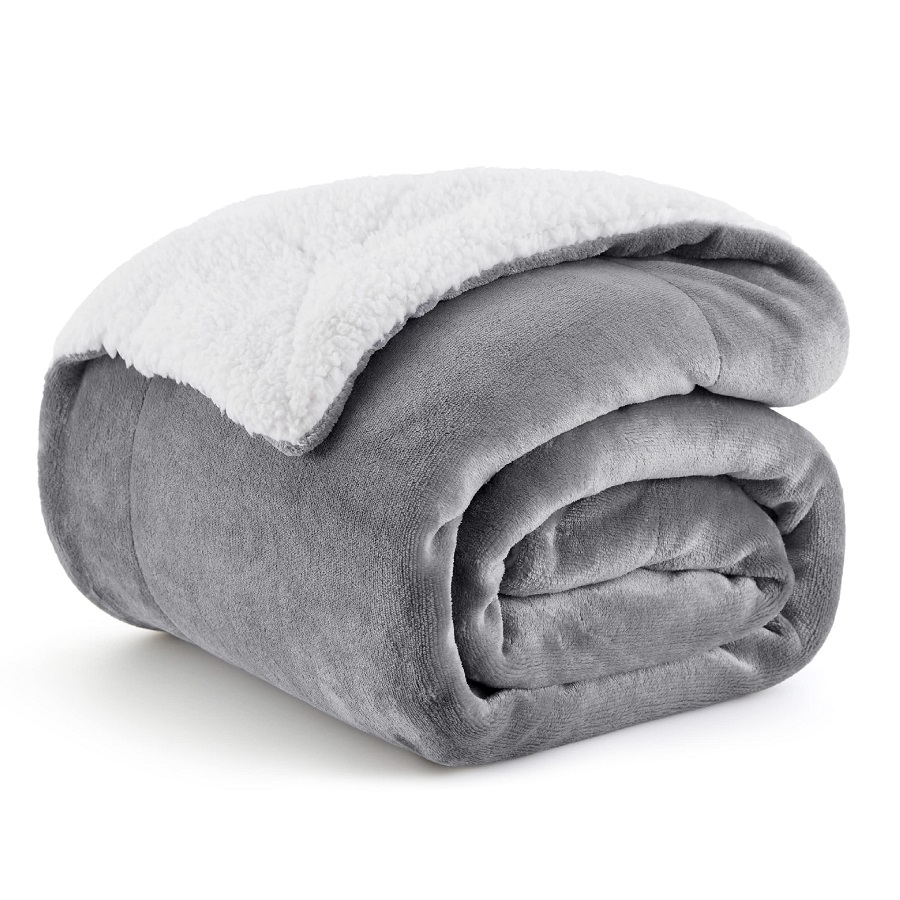Introduction
How to wash a blanket – Washing your blanket may seem like a straightforward task, but doing it correctly can significantly extend its life and maintain its cozy feel. Whether you have a soft fleece blanket, a luxurious wool throw, or a durable cotton coverlet, this guide will equip you with all the tips and tricks necessary for proper care.
Why Wash Your Blanket?
Before diving into the specifics, let’s discuss why washing your blanket is essential:
- Hygiene: Blankets can harbor dust mites, allergens, and bacteria over time, especially if you frequently use them or sleep with them.
- Odor Removal: Blankets can absorb odors from pets, food, and the environment. Regular washing helps keep them smelling fresh.
- Prevent Wear and Tear: Regular cleaning can prevent the buildup of grime and dirt, which can wear down fabric fibers over time.
- Aesthetic Appeal: A clean blanket looks and feels better, enhancing the ambiance of your living space.
When to Wash Your Blanket
Identifying when to wash your blanket can vary depending on its use and the type of fabric. Here are some general guidelines:
- Every 1-2 weeks: If you use it frequently or for sleeping.
- Every month: If it’s primarily decorative or used sparingly.
- After spills or accidents: If there are any evident stains or odors.
- Seasonally: For heavier blankets like comforters, consider washing them at the end of the season.
Materials Matter
Before washing your blanket, it’s crucial to know its material type, as different fabrics require different care approaches. Here are some common blanket types and their specific care instructions:
Cotton Blankets
- Wash Cycle: Use a machine wash on a warm cycle.
- Drying: Tumble dry on low; cotton can shrink, so remove it while slightly damp and let it air dry fully.
- Stains: Pre-treat with a stain remover if needed.
Fleece Blankets
- Wash Cycle: Machine wash on cold to preserve softness and prevent pilling.
- Drying: Tumble dry on low heat; avoid high heat as it can damage the fibers.
- Special Tip: Add vinegar to the rinse cycle to help eliminate static cling.
Wool Blankets
- Wash Cycle: Hand wash or use the gentle cycle with cold water; this prevents felting.
- Drying: Lay flat to dry to maintain shape; never wring or twist.
- Special Treatment: Consider using a wool-specific detergent.
Microfiber or Polyester Blankets
- Wash Cycle: Use a gentle cycle with warm water.
- Drying: Tumble dry on low; avoid high heat, which can melt the fibers.
- Special Tip: Avoid fabric softeners, as they can make microfiber less effective.
Electric Blankets
- Washing: Always check the manufacturer’s label. Most recommend hand washing or dry cleaning.
- Drying: Typically, air dry completely; never put in a dryer.
- Special Note: Disconnect all electrical components before washing.
 Steps for Washing Your Blanket
Steps for Washing Your Blanket
Now that you understand the basic care for different blanket types, here’s a step-by-step process to ensure a successful wash:
- Read the Care Label: Check for specific washing and drying instructions.
- Pre-Treat Stains: Use a suitable stain remover on any visible stains. Let it sit for 5-10 minutes before washing.
- Choose the Right Detergent: Use a gentle, hypoallergenic detergent, especially for sensitive skin.
- Select the Wash Cycle: Use the appropriate wash cycle based on the blanket material. Utilize cold water to preserve color and texture.
- Load Carefully: Avoid overloading the washing machine. A blanket needs enough space to move freely.
- Dry with Caution: After washing, check if the blanket can go into the dryer. If air drying, lie it flat or hang it up, taking care to avoid direct sunlight, which can cause fading.
- Check for Odors and Cleanliness: Once dry, check if the blanket smells fresh and clean. If not, consider re-washing.
Tips for Maintaining Blanket Freshness
Even after washing, there are several practices you can adopt to keep your blankets feeling and smelling fresh:
- Rotate Regularly: If you have multiple blankets, rotate them to allow each one to air out and breathe.
- Storage: When not in use, store blankets in a cool, dry place, preferably in breathable fabric bags.
- Freshening Sprays: Occasionally spray with a fabric freshener or diluted essential oils and water to maintain a pleasant scent.
- Keep Pets Off: If possible, designate certain blankets for human use only to avoid fur buildup.
Choose Your Washing Method
Machine Washing
- Load: Place the blanket in the washing machine. Ensure not to overload the machine; the blanket should have enough space to move around freely.
- Settings: Set the machine to a gentle or delicate cycle, using cold or lukewarm water. Hot water can shrink certain materials.
- Detergent: Add a mild detergent according to the manufacturer’s instructions.
- Vinegar Rinse: Optional but recommended for added freshness – add 1 cup of white vinegar during the rinse cycle to neutralize odors.
Hand Washing
- Fill a Bathtub or Large Basin: Fill with lukewarm water.
- Detergent Mixture: Add a small amount of mild detergent to the water and stir to create suds.
- Soak and Agitate: Submerge the blanket and gently agitate it, focusing on any stained areas. Let it soak for about 30 minutes.
- Rinse: Drain the soapy water and rinse the blanket thoroughly with clean water until all suds are gone.
Drying Your Blanket
Drying is just as important as washing:
Machine Drying
- Low Heat: If the care label indicates it’s safe, use a tumble dryer on low heat. High heat can damage some fabrics.
- Add Dryer Balls: To help fluff up the fibers and reduce drying time, add dryer balls or clean tennis balls.
- Check Periodically: Stop the dryer occasionally to check on the blanket’s progress to avoid overheating.
Air Drying
- Lay Flat: If machine drying isn’t suitable, lay your blanket flat on a clean, dry surface, away from direct sunlight to prevent fading.
- Hang: Alternatively, hang it on a clothing line using clothespins to prevent it from blowing away.
Refreshing the Blanket’s Texture
Once dry, gently shake the blanket to restore its softness. If you notice any lingering odors, lightly sprinkle baking soda over the blanket and let it sit for a few hours before shaking it off.
Store Properly
If you’re not using the blanket immediately, store it properly to keep it fresh:
- Fold Neatly: Tidy folding prevents creases and maintains shape.
- Breathable Storage: Use a breathable fabric bag or a dedicated storage box (avoid plastic) to prevent moisture accumulation.
- Keep Away from Direct Sunlight: Protect the color and fabric from fading.
Gather Your Supplies
Before starting, collect the necessary supplies:
- Mild Detergent: Choose a gentle, fragrance-free detergent that won’t irritate sensitive skin.
- White Vinegar: Acts as a natural deodorizer and helps to remove stubborn odors.
- Baking Soda: A natural cleaner that helps with stains and odors.
- Laundry Basket: For transporting your blanket.
- Washing Machine (or a bathtub for handwashing): Depending on the size and care instructions of your blanket.
- Drying Rack or Tumble Dryer: For air-drying or machine-drying your blanket.
Read the Care Label
Before proceeding, check the care label on your blanket. Different materials require separate approaches:
- Cotton: Typically machine-washable and can withstand higher temperatures.
- Wool: Often requires gentle hand washing or dry cleaning.
- Synthetic Fabrics: Usually machine-washable but may have specific recommendations.
Knowing your blanket’s material will help you choose the correct washing method.
Prepare the Blanket for Washing
Check for Stains
Before washing, inspect the blanket for any stains. Treat those promptly:
- For food stains, gently dab with cold water.
- For stubborn stains, apply a mixture of baking soda and water directly to the stain and let it sit for 15-30 minutes before washing.
Shake it Out
Give your blanket a good shake outdoors or in a well-ventilated area to remove loose dust and dirt.
 Conclusion
Conclusion
Taking the time to wash and care for your blankets properly ensures they remain soft, clean, and cozy. By understanding the specific needs of different materials and following the proper washing techniques, you can extend the life of your blankets significantly. Remember, a clean blanket is not only beneficial for hygiene but also adds a touch of comfort and luxury to your living space – because everyone deserves to snuggle up in a freshly washed, cozy blanket!
